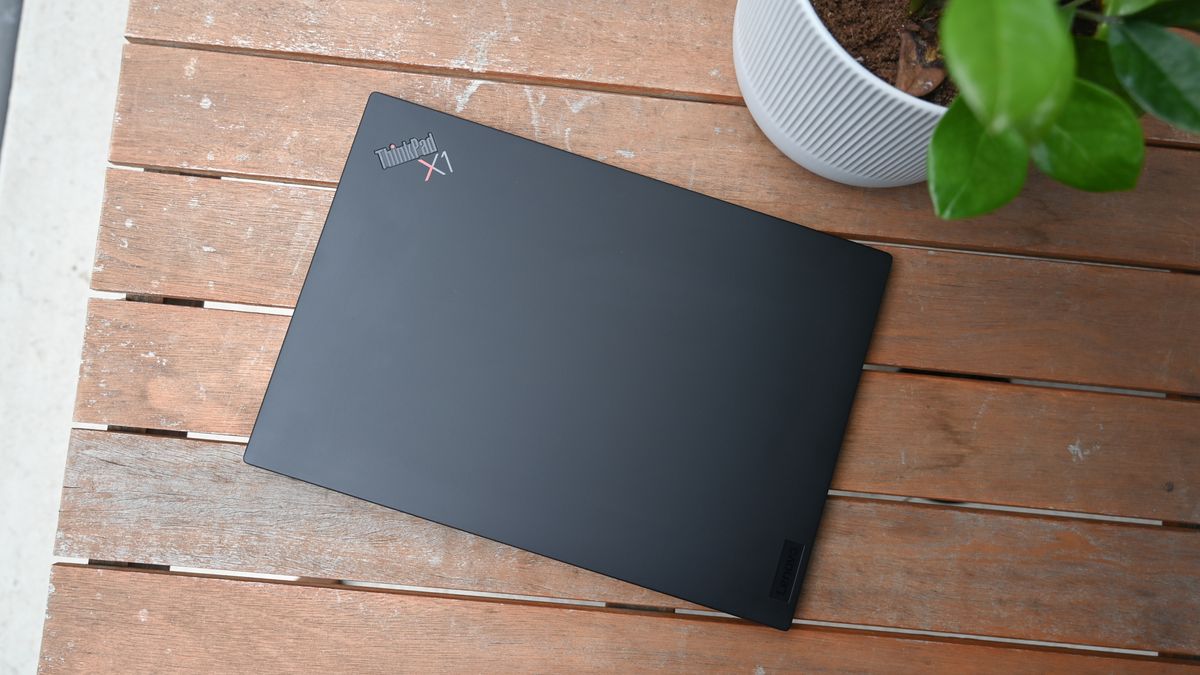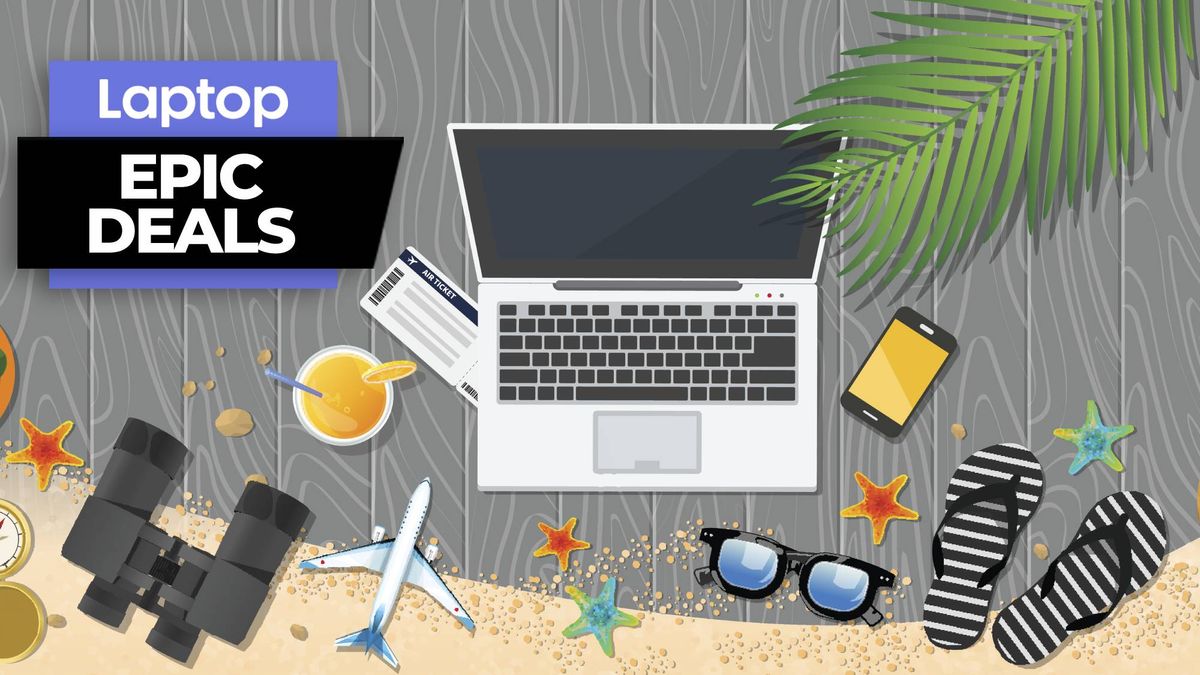The best business laptops offer durability, power, security and ease of use, whether you are in the office or working from home.
We review dozens of business laptops each year and the models that make our best business laptops list offer a combination of comfort, performance and battery life. Don’t forget about security and durability — business laptops typically come with fingerprint sensors, IR cameras and security chips, and many have military-grade durability. Newer models even feature webcam sliders and displays with built-in privacy filters.
If you need something with more oomph than your traditional business laptop, then check out our best workstations page. If you’re not sold on a business laptop, read our best laptops page which features many options that would be at home in the office and at home. Are you a fan of a specific brand? See our best Lenovo ThinkPad and best Dell Latitude and Precision laptops guides.
Which business laptop is best?
Lenovo’s ThinkPad X1 Carbon (Gen 9) is our favorite business laptop for four years running thanks to its lightweight design, fast performance and strong display options. If that’s a little pricey for you then consider the Lenovo ThinkPad 14s Yoga, a gorgeous 2-in-1 laptop with solid battery life, an awesome keyboard and an enticing sub-$1,000 price point. And don’t count Dell out; its Latitude 9420 2-in-1 is a fantastic option if you have the budget.
On the macOS side of things, the 14-inch MacBook Pro with M1 Pro is an excellent option for power users who run massive simulations or transfer large files. The new M1 Pro processor is a speed demon but also efficient enough to give the MacBook Pro an absurd 14 hours and 8 minutes of battery life.
If you’re an artist or designer who wants to use a stylus, we recommend the Dell Latitude 7320 Detachable, Microsoft Surface Pro 8 or the Lenovo ThinkPad X12 Detachable, which is essentially a tablet version of the X1 Carbon. True power users who need to crunch big data should opt for a workstation, like the excellent HP ZBook Studio G8 or ThinkPad P15 Gen 2. For those on a budget, like small-business owners, the HP Pro C640 Chrome Enterprise is a straightforward, easy-to-use laptop that starts at $449.
Lenovo made several welcome changes to the 9th Gen edition of its flagship business laptop. Along with fast performance from 11th Gen Intel CPUs, you get longer battery life (15 hours!), powerful quad speakers, a new 14-inch display with a 16:10 aspect ratio, and plenty of ports, all in an impossibly lightweight chassis (2.5 pounds).
But it’s still those classic ThinkPad features — a durable design (with MIL-STD-810G strength), best-in-class keyboard and stealthy black/red aesthetics — that carry the X1 Carbon to greatness.
Yes, we wish the ThinkPad X1 Carbon had a better webcam and hadn’t ditched the SD card reader in the previous. Also, top configurations can get very expensive; still, you’d be hard-pressed to find a better business laptop.
See our full Lenovo ThinkPad Carbon X1 (Gen 9) review.
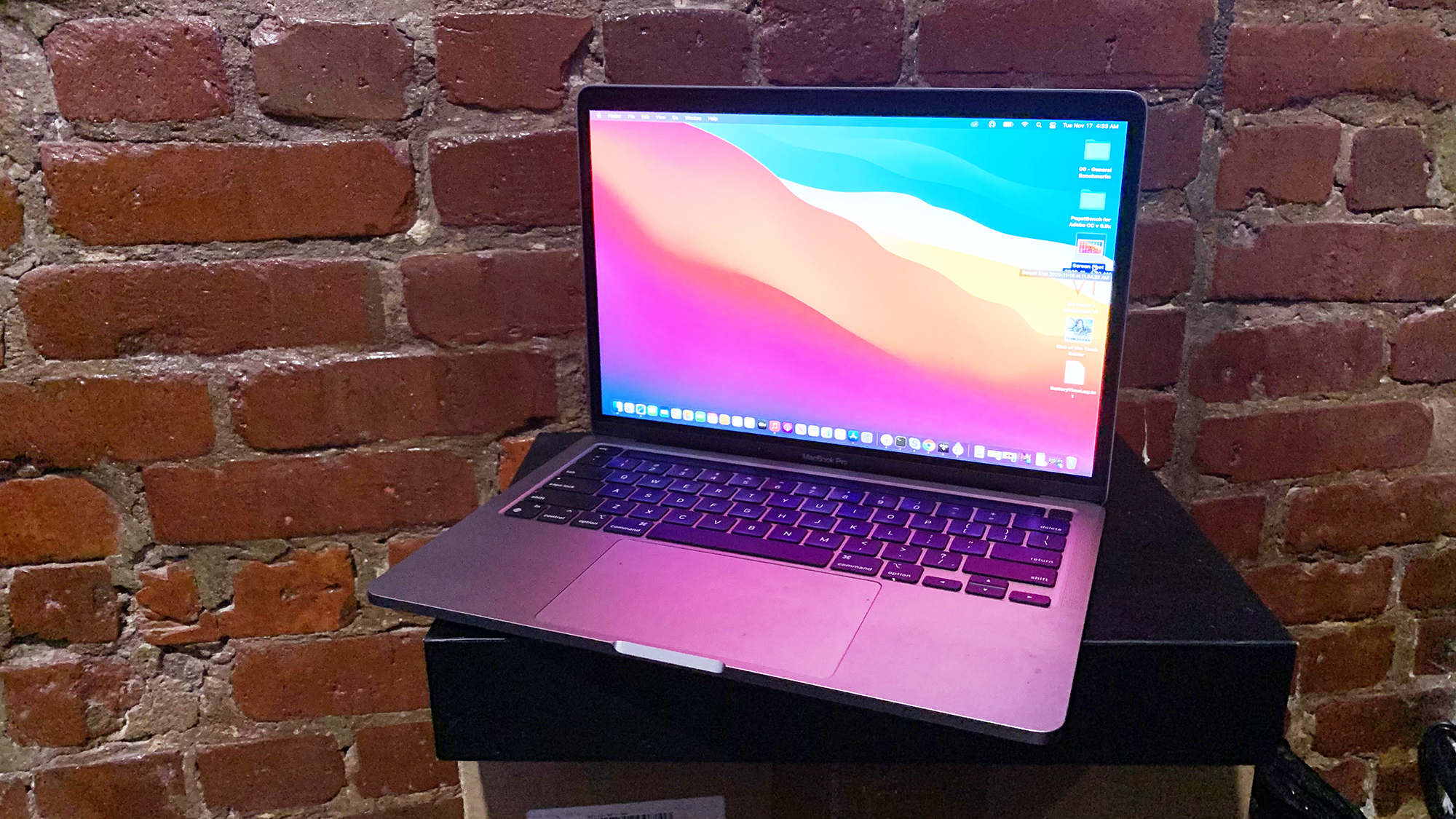
Welcome to the new era of Apple computing. Apple’s M1 Pro custom SoC takes another step in Apple’s conscious uncoupling from Intel. The ARM-based 5-nanometer chip can be considered mid-tier in the M1 line, but it’s by no means a slouch, especially with a 10-core processor, 16-core graphics chip and a 16-core Neural Engine
The MacBook Pro 14-inch delivers impressive performance and outstanding battery life. If that’s not enough, paired with Big Sur, you get blistering webpage load times and a better 1080p webcam experience –– all thanks to Apple Silicon. In short, the new MacBook Pro is everything Apple said and more. If the 14-inch MacBook Pro is a little too pricey, consider the 13-inch MacBook Pro with M1, which offers even better battery life and solid performance for typical office tasks.
See our full Apple MacBook Pro (14-inch, M1 Pro) review.
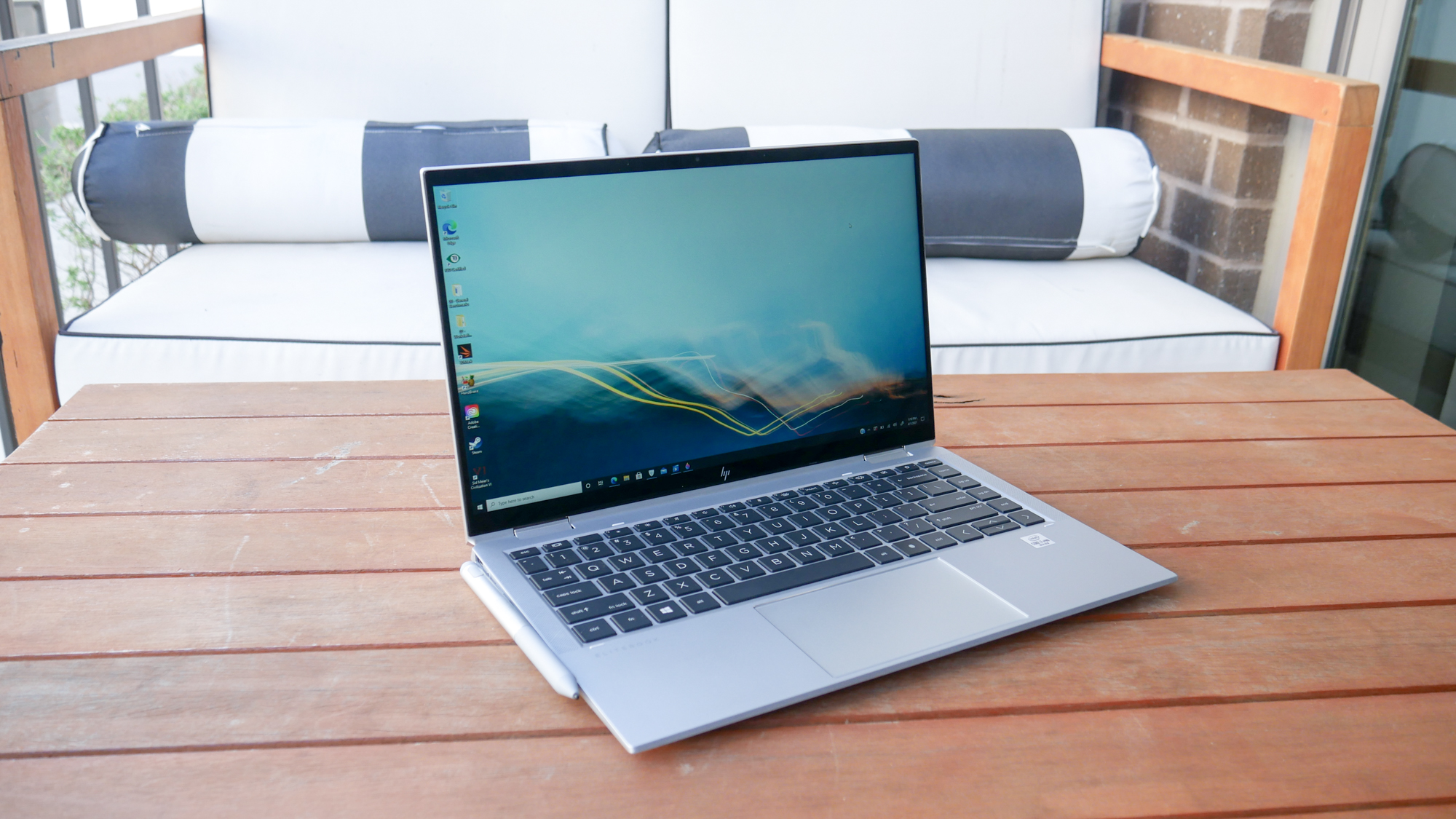
The ThinkBook 14s Yoga delivers amazing value at under $1,000 for a durable 2-in-1 that includes a built-in Smart Pen, solid performance and battery life.
While it could never quite grab that first place spot on our benchmarks, it consistently earned itself a silver, which makes for a balanced laptop that won’t let you down in any regard.
Overall, if you don’t want to spend a penny more than $1,000 — and you want an impressive 14-inch business-oriented convertible with an included Smart Pen — you can’t go wrong with the ThinkBook 14s Yoga.
See our full Lenovo ThinkBook 14S Yoga review

Lenovo is trusting in aluminum with the ThinkPad X1 Yoga, and the risky decision is paying off. While we still love the signature matte-black carbon fiber found on most ThinkPads, the aluminum ThinkPad X1 Yoga is a gorgeous change of pace. Not only does it have a slim design, but this convertible 2-in-1 flaunts a bright 14-inch 16:10 display and offers a best-in-class keyboard and long battery life. These combine to make the best Lenovo laptop for anyone who those looking for a convertible.
You also get loads of extra goodies, like a built-in stylus slot and webcam cover. We still love the ThinkPad X1 Carbon for its super-lightweight chassis, but you should definitely get the Yoga instead if you want to use a stylus.
If you prefer a detachable, give our ThinkPad X12 Detachable review a read. Want something a bit more spicey? The ThinkPad X1 Titanium Yoga is an excellent option.
See our full Lenovo ThinkPad X1 Yoga (6th Gen, 2021) review.
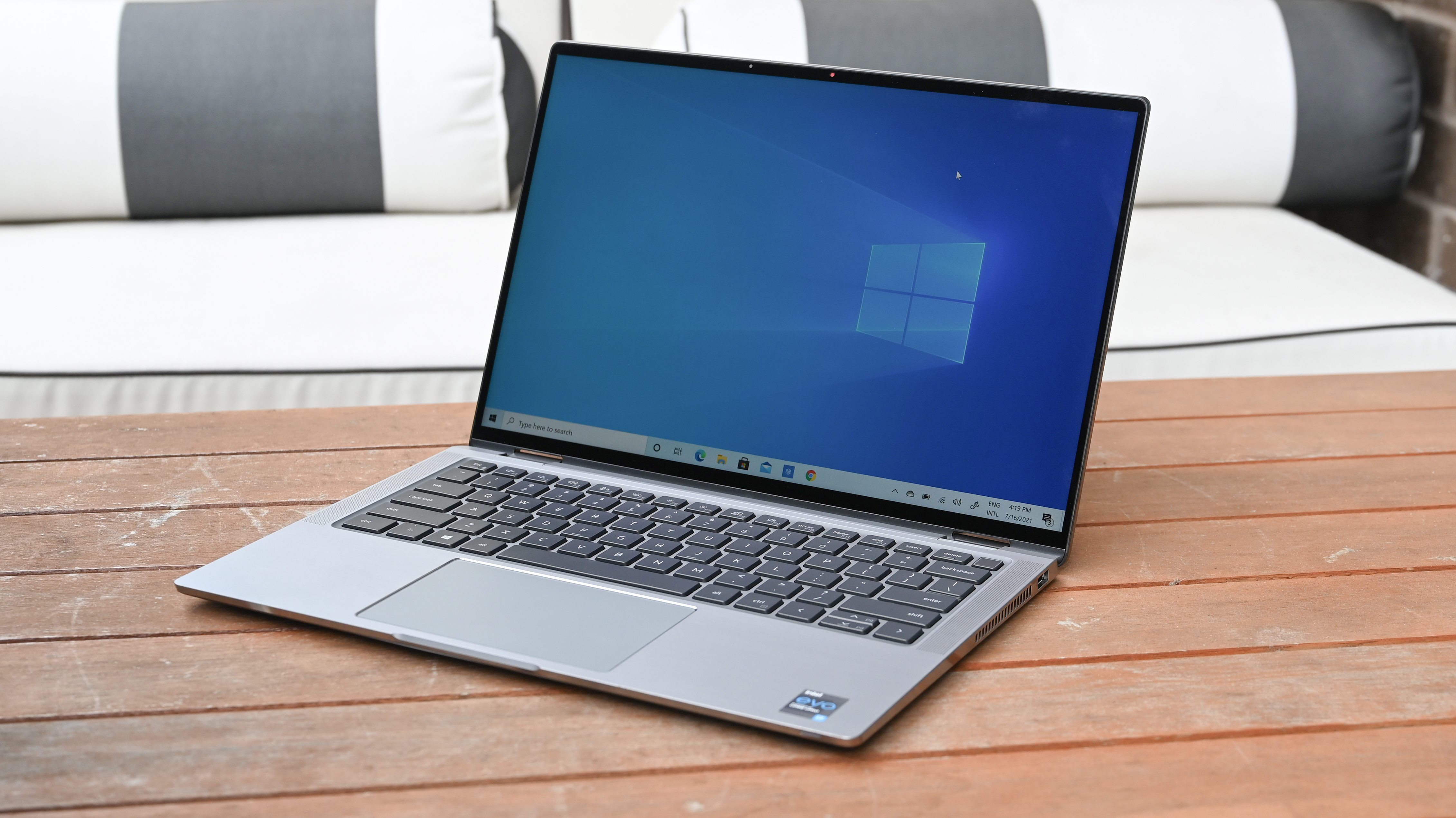
If battery life is a priority, the Dell Latitude 9420 2-in-1 is the business laptop for you. The 2-in-1 laptop easily got me through a full day of use, even with the screen brightness turned up. But its 15+ hours of runtime isn’t the only reason to buy this notebook; the Latitude 9420 2-in-1 has a sleek, flexible design, fast performance and some useful sign-in options. Perhaps most impressive is that you get that epic endurance despite the laptop having a fantastic 14-inch, 2560 x 1600-pixel 16:10 display.
All you need to do is walk up to this Dell and it will know that you’re there, thanks to its proximity sensor. This makes it super easy to log in — you don’t have to input any passwords or even look at an IR camera.
The Latitude 9420 2-in-1 is yet another big stepping stone for Dell’s famously uninspiring business notebooks. We hope the next version has a better webcam and costs less because if it does, you can say goodbye to the X1 Carbon as the best business laptop.
See our full Dell Latitude 9420 2-in-1 review.
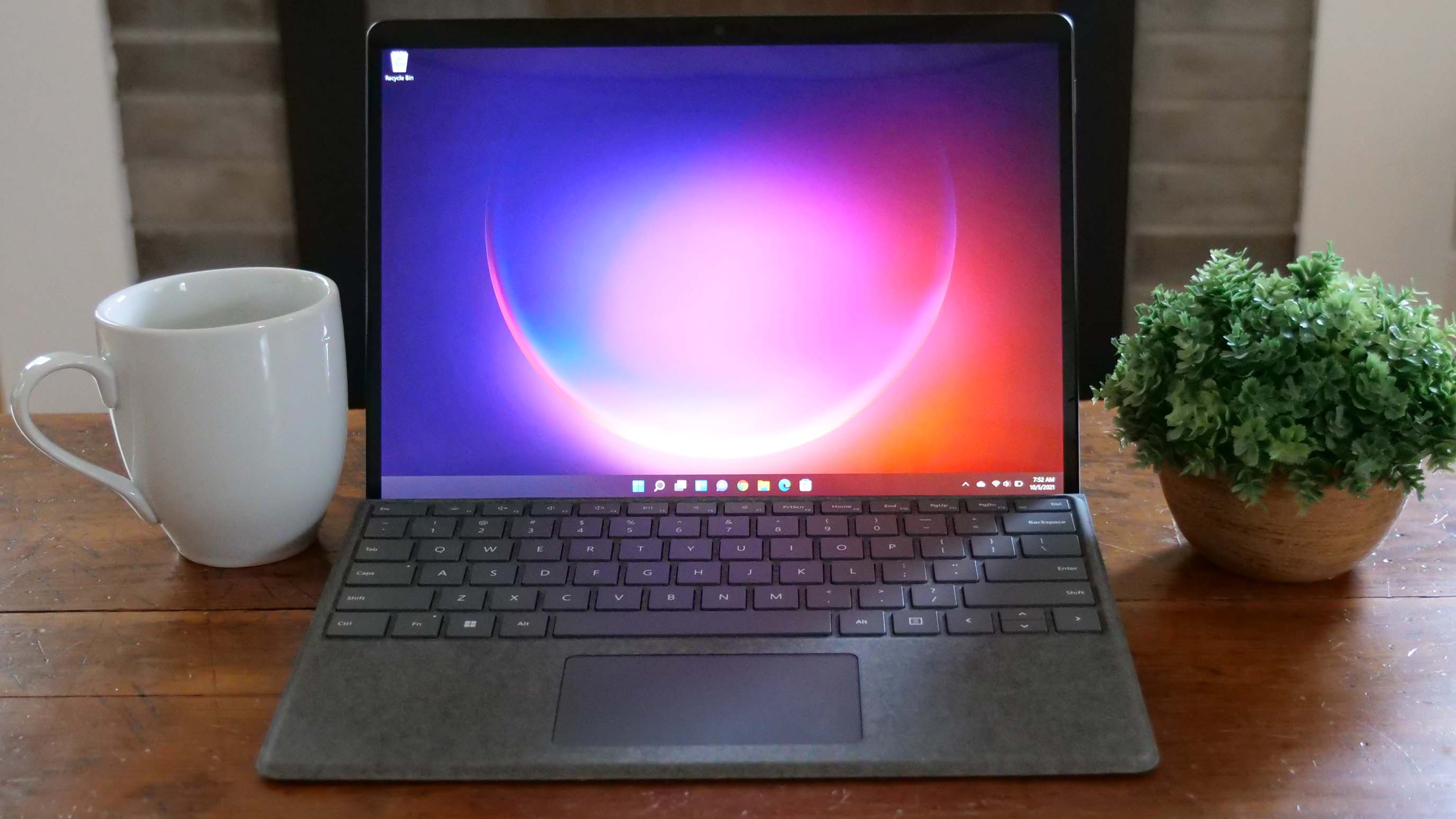
The Microsoft Surface Pro 8 isn’t a quantum leap forward from its predecessors. Still, it makes enough crucial upgrades to an already excellent 2-in-1 tablet to once again put it among the top 2-in-1 laptops.
The added screen size and reduced bezels make for a more modern look, while the rounded edges give it a much more tablet-friendly feel backed up by some of the new software touches in Windows 11. For creatives or prolific note-takers, the new Slim Pen 2 combined with the Type Cover gives you a built-in stylus with a tactile feel that makes for an improved inking experience.
A bit more battery life would have been outstanding and the price jump may be hard for some to swallow. However, taken as a whole, the Surface Pro 8 is a solid addition to the Surface lineup and a compelling option for those looking to upgrade their laptop for the move to Windows 11.
Not sold on the Surface Pro 8? See our review of the ThinkPad X12 Detachable. If you want more dedicated business features, the Surface Pro 7+ offers a more enterprise-focused take with the last-gen Surface Pro design.
See our full Surface Pro 8 review.
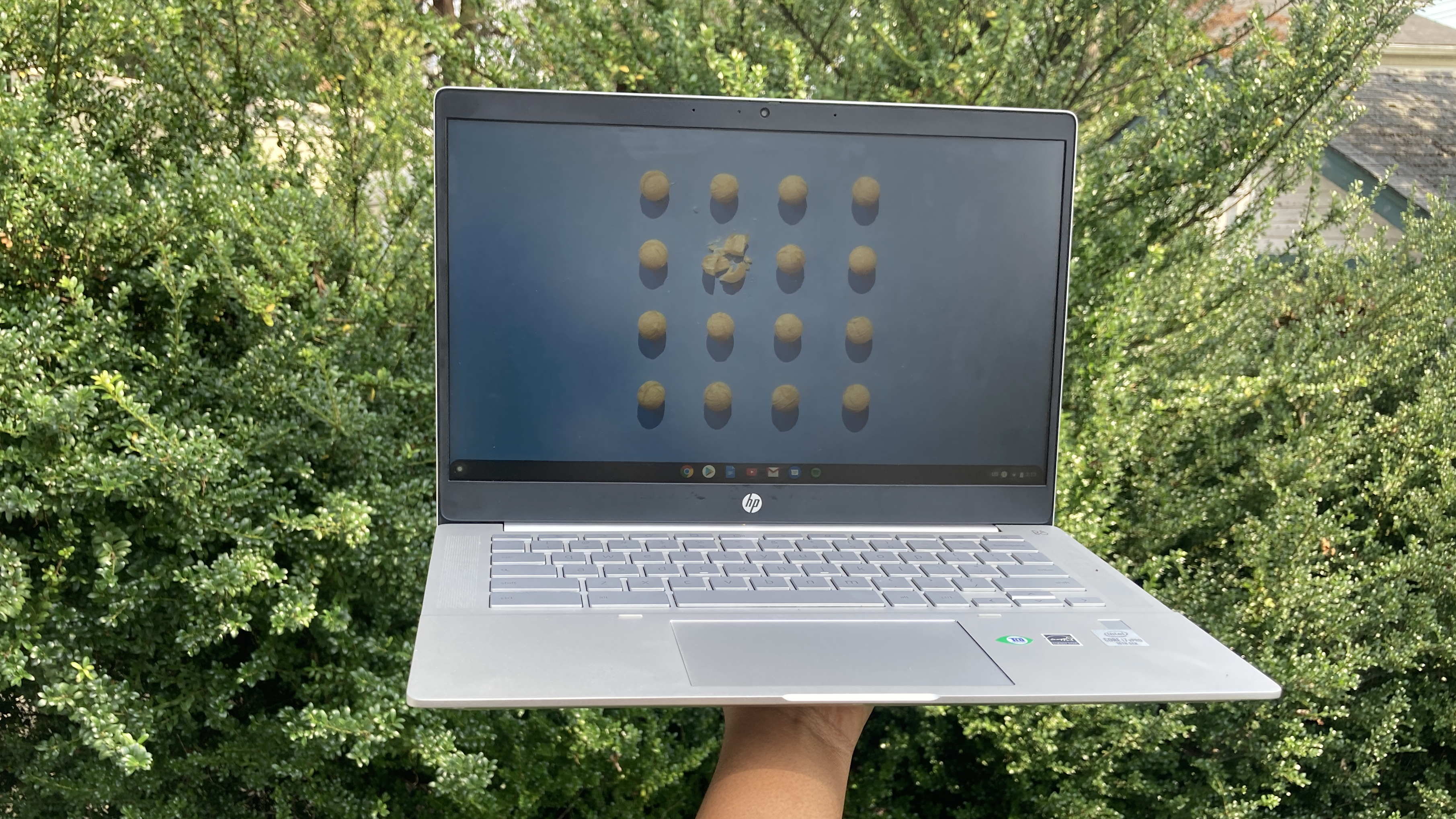
Chromebooks…for business users? Yes, we mean it. The HP Pro C640 Chromebook Enterprise is the best option in this budding category. Running on Chrome OS with Chrome Enterprise, Google’s cloud-based IT platform, the Pro C640 is a good alternative to Windows or macOS for small business owners or boutique companies.
What makes it such a compelling laptop is that it doesn’t compromise on features to fit the traditional Chromebook persona as being cheap and built out of plastic. Instead, the Pro C640 has a gorgeous metal chassis that is military-grade tested, plenty of security options including a fingerprint scanner, and fast performance delivered by a 10th Gen Intel Core i7 CPU.
While you can customize it to up to over $1,000, there are numerous models available for hundreds less, so if you are willing to take the leap on Chrome Enterprise, you can get premium hardware at a very affordable price.
See our full HP Pro C640 Chromebook Enterprise review.
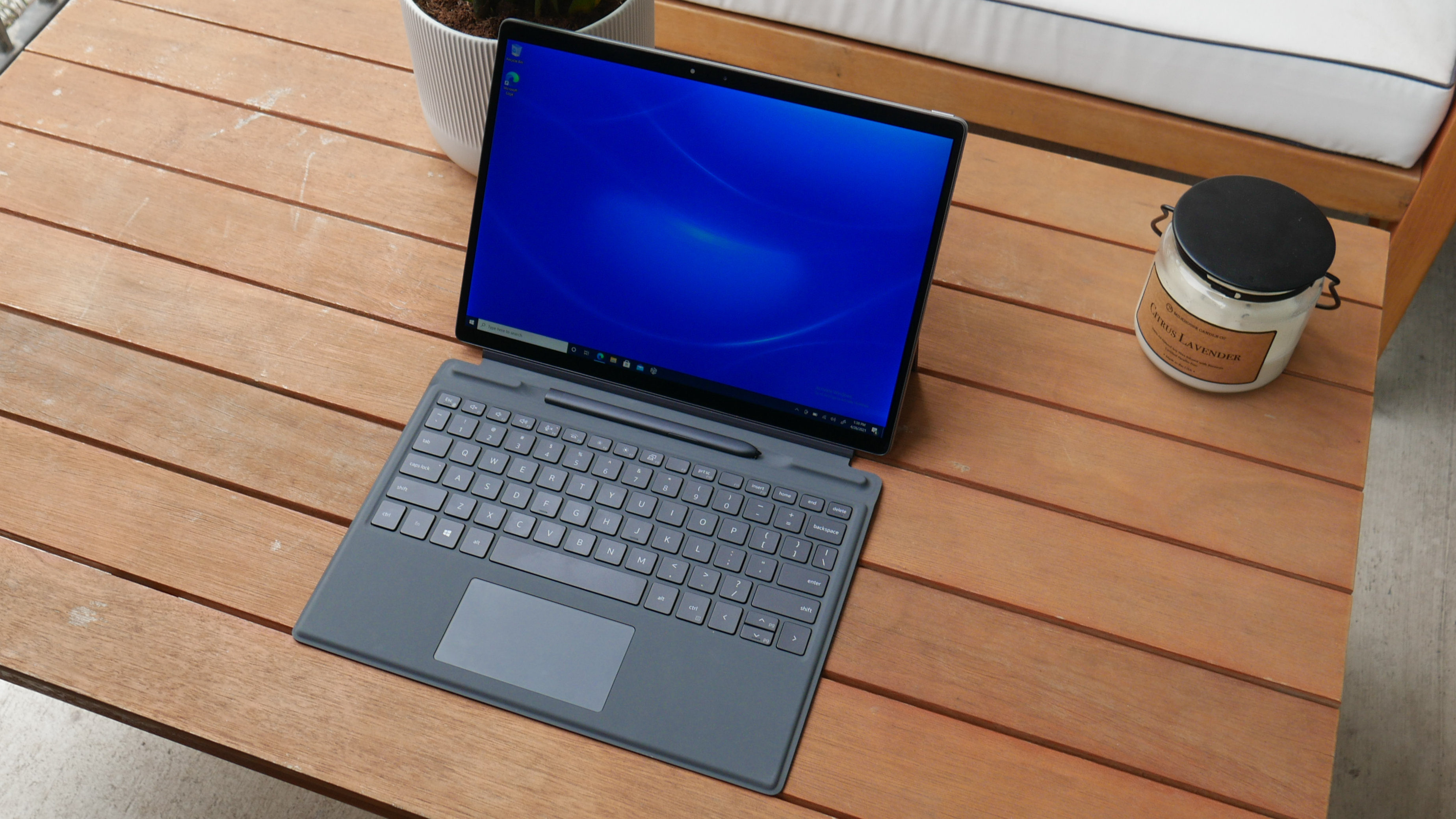
With the Latitude 7320 Detachable, Dell takes on the Surface Pro 7 and wins. Standout features include a gorgeous 13-inch display, fast performance, a comfortable detachable keyboard with a built-in stylus slot, useful security features, and a class-leading webcam (yes, you read that right). These are all packaged in a sleek metal chassis that can easily be slipped into a backpack or purse.
The Latitude does waver in a few areas. The kickstand feels somewhat flimsy and the sky-high price will detract all but the highest-ranking execs or the wealthiest corporations. Despite these faults, the Latitude 7320 gives Dell enterprise customers an excellent version of this ultra-mobile form factor so they can work or relax from anywhere.
See our full Dell Latitude 7320 Detachable review.
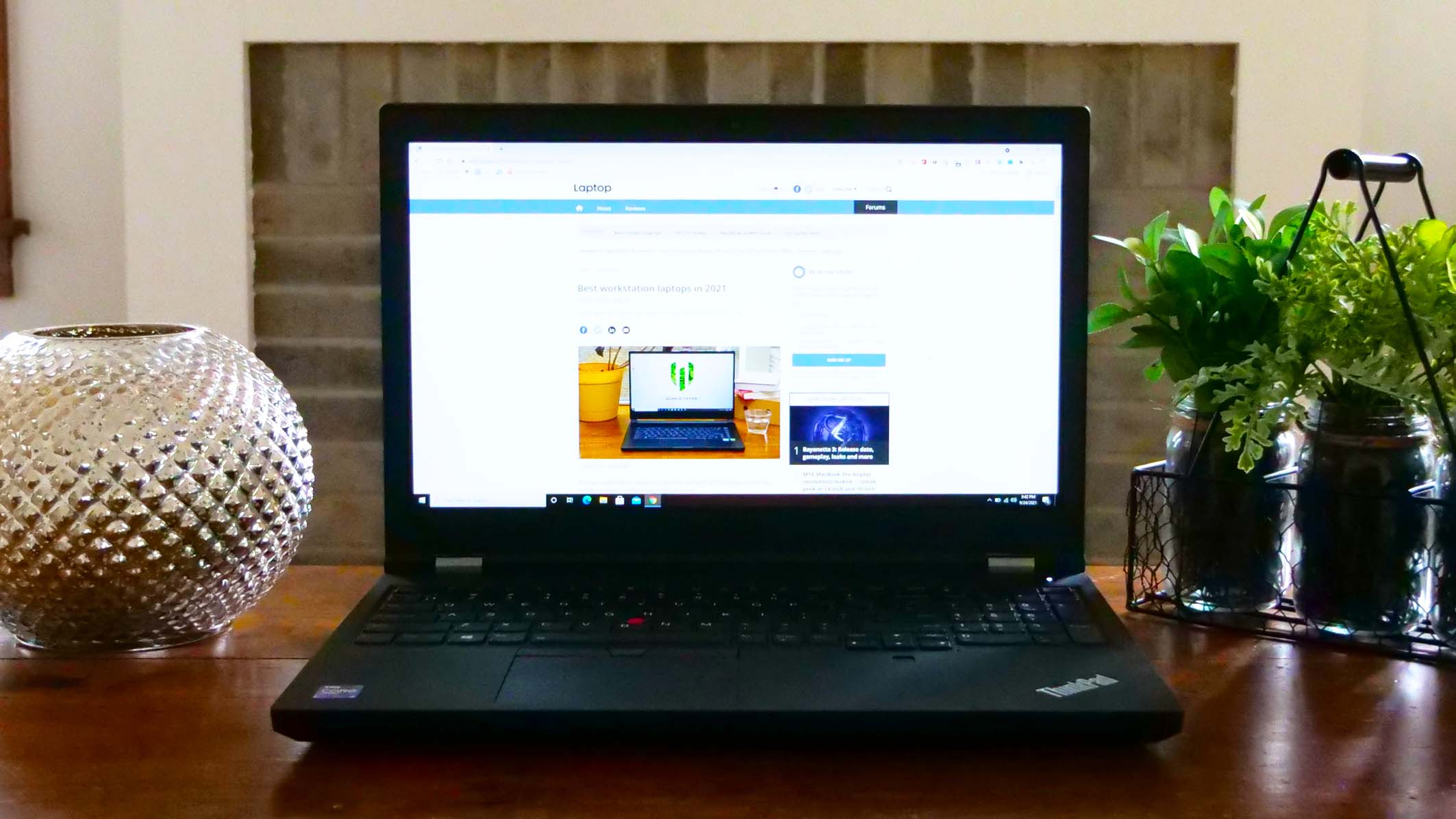
The Lenovo ThinkPad P15 Gen 2 improves on what was already a winning formula with the original ThinkPad P15 with upgraded performance and stellar battery life for the 1080p model.
The laptop’s 11th Gen Intel Core i9-11950H CPU, Nvidia RTX A5000 GPU and 32GB of RAM make it an absolute workhorse of a workstation. If raw performance is your goal, it will be hard to beat the ThinkPad P15 Gen 2. The one concern for creatives will be the display, but if that’s crucial for you consider the OLED panel option or perhaps an external display.
See our full Lenovo ThinkPad P15 Gen 2 review.

16 hours and 42 minutes. That is how long the ExpertBook B9450 lasted on our battery test, which involves continuous web surfing over Wi-Fi at 150 nits. Almost 17 hours. Can you believe that? Because I can’t. No other laptop has endured for that amount of time.
It’s incredible for so many reasons. Sure, that’s super long. But what if I told you that the longest-lasting laptop ever weighs just 2.2 pounds. Or that it has a 10th Gen Intel U-series processor inside? Or that the midnight-blue chassis is one of the most gorgeous we’ve ever seen. There are so many reasons to love the ExpertBook B9450 and to even consider it over the ThinkPad X1 Carbon. Asus still has a few things to fix — like the frustrating keyboard — but it’s on the right path.
Read our full Asus ExpertBook B9450 review.
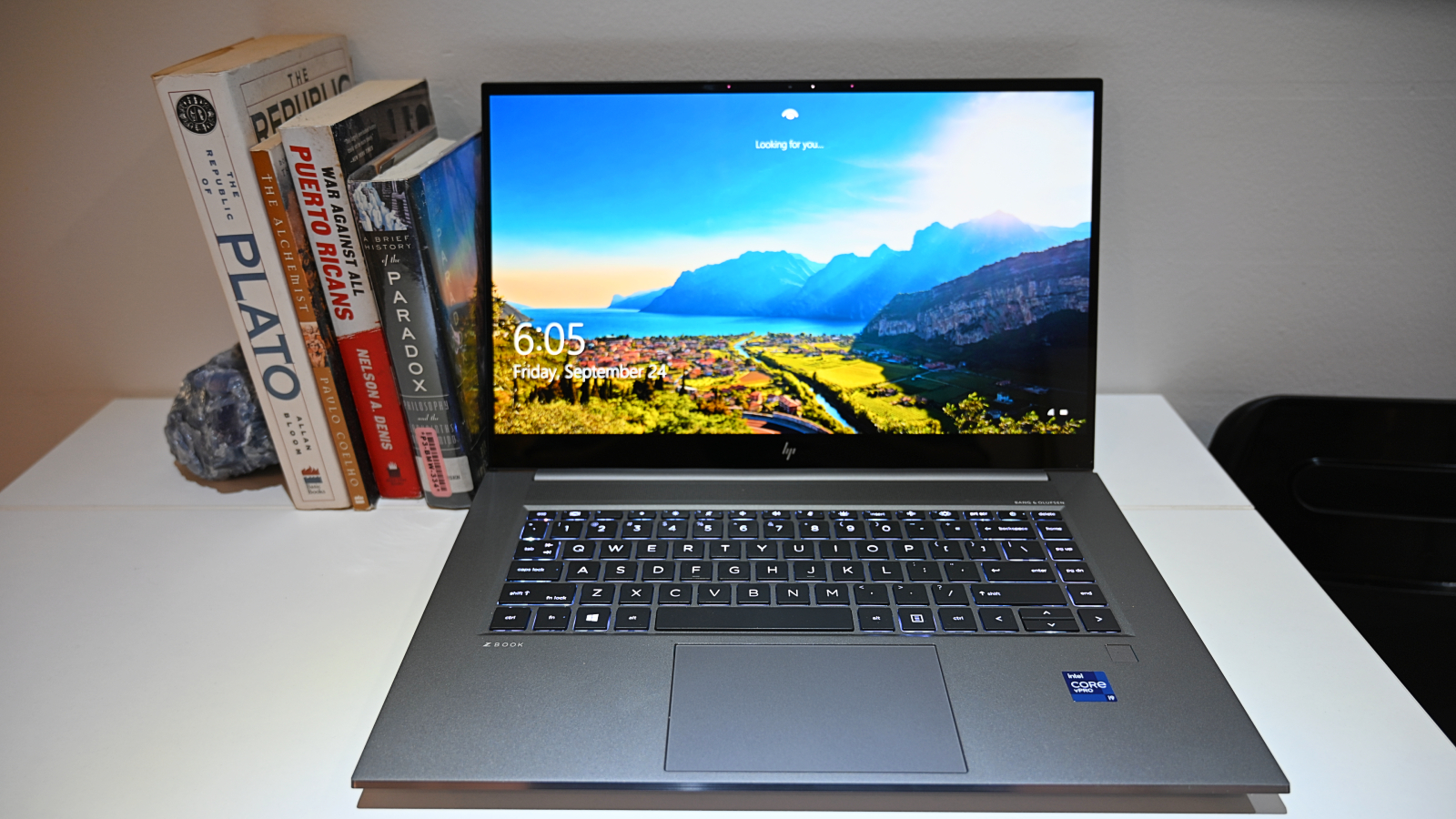
This salacious attention grabber comes with an 11th Gen Intel Core i9 processor, 32GB of RAM, 2TB of SSD storage, and an Nvidia GeForce RTX 3070 GPU that will more than handle all your Adobe Creative Suite power-hungry needs and then some.
The $4,727 system is gorgeous, powerful, MIL-SPEC tough, and in my humble opinion is one of the best content creator laptops on the market. Oh, I forgot to mention, its OLED 4K touchscreen is bright, vivid and positively stunning.
However, for the price, I wish the battery lasted longer and it didn’t run as hot. If you’re looking for longer battery life and just a scooch more power, the $2,999 MSI Creator Z16 is an option that’s loads cheaper.
See our full HP ZBook Studio G8 review.
How to choose a business laptop
Here are some things to keep in mind when choosing the right model of business laptop for you or your company.
- Do you need Intel vPro or AMD Pro? Many business laptops are available with CPUs that have Intel vPro technology, which lets a support person log in remotely, even if the computer can’t boot. However, unless you have a large IT department and a huge fleet of laptops that you need the ability to service remotely, you probably won’t use this feature.
- How fast do you need it to be? Most business users will be happy with a laptop that has a dual-core, Core i5 CPU like the Core i5-7200U or Core i5-7300U (vPro) and the CPU’s integrated graphics processor. However, if you require a high-end performance for 3D Modeling, professional video editing or creating predictive models, then get a mobile workstation with a quad-core Core i5 or Core i7 CPU (model numbers end in HQ) and Nvidia Quadro graphics.
- Long battery life: Nobody wants to run out of juice in the middle of a long workday or a cross-country flight. Unless you’re getting a giant workstation, look for a laptop that gets more than 9 hours on a charge. Some business systems come with a choice of regular or extended batteries; always get the high-capacity unit.
- At least a 1080p screen: It’s hard to be productive if you can’t see much text on the screen. Avoid laptops with low-resolution, 1366 x 768 screens like the plague. Get one with a resolution that’s 1920 x 1080 or higher.
- SSDs for responsiveness: If you want a truly fast computer, get a solid state drive rather than a mechanical hard drive. SSDs boot up, open programs and multitask at least three times faster than old-fashioned hard drives.
- The right ports: Nobody likes to carry a bag full of dongles. Consider which kinds of connections you or your employees will need the most. If you connect to a wired network a lot, make sure the laptop has an Ethernet port. If photography is a key part of the job, choose a laptop with a memory card reader. No matter what your needs, a Thunderbolt 3 port is a huge plus, because it will allow you to connect to a new generation of high-speed peripherals, universal chargers and powerful docks.
- A great keyboard: It almost goes without saying that every laptop should have a good keyboard. But with business systems, a comfortable typing experience is even more important. Look for snappy feedback, deep travel and absolutely no flex.
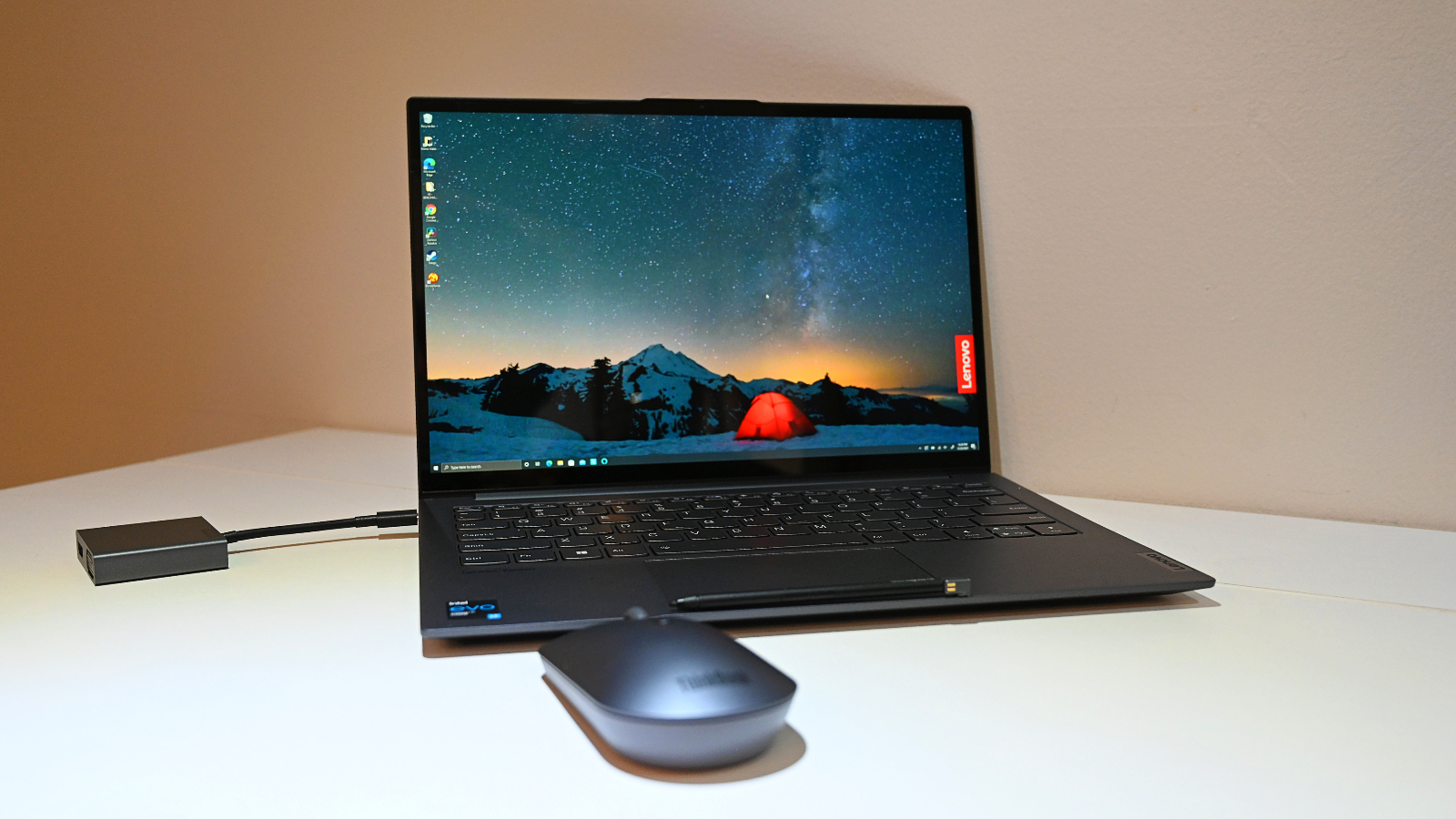
How we test business laptops
We put each laptop through extensive benchmark testing — both synthetic and real-world — before they end up in the hands of our reviewers. We evaluate each aspect of the laptop, including its performance, battery life, display, speakers and heat management.
In our benchmark testing, we use a Klein K10 colorimeter to detect the brightness and sRGB color gamut of the laptop’s display. For performance testing, we run the laptop through a gauntlet of benchmarks, including Geekbench 4.3 and 5.0 and 3DMark professional graphics tests.
To determine real-world performance, we task the laptop to convert a 4K video to 1080p resolution and to duplicate a 4.97GB multimedia file. Our real-world graphics test is the Dirt 3 benchmark with medium settings at 1080p resolution.
We also run heat tests by playing a 15-minute full-screen video and measuring temperatures in different areas of the laptop. Last but not least, our battery test consists of continuous web surfing over Wi-Fi at 150 nits of brightness. For MacBooks and premium Windows 10 laptops, a runtime of over 9 hours is considered a good result whereas gaming laptops and workstations that can stay powered for longer than 5 hours deserve praise.
These tests are complemented with extensive hands-on testing from our reviewers who critique everything from the laptop’s materials to the feel of its touchpad.

